PEOPLE
ANALYTICS
WITH BDG ONE
People analytics: Finding out why certain effects occur in HR work, whether they are undesirable - such as long vacancies - or desirable, such as strong performance values, is considered by many to be the holy grail of HR work.
But: people analytics is a generic term for countless individual analyses, some of which differ greatly in terms of effectiveness, ROI and meaningfulness.
With bdg ONE, we take a pragmatic middle path: we automate the simple analysis procedures and offer the foundations for high-end procedures.
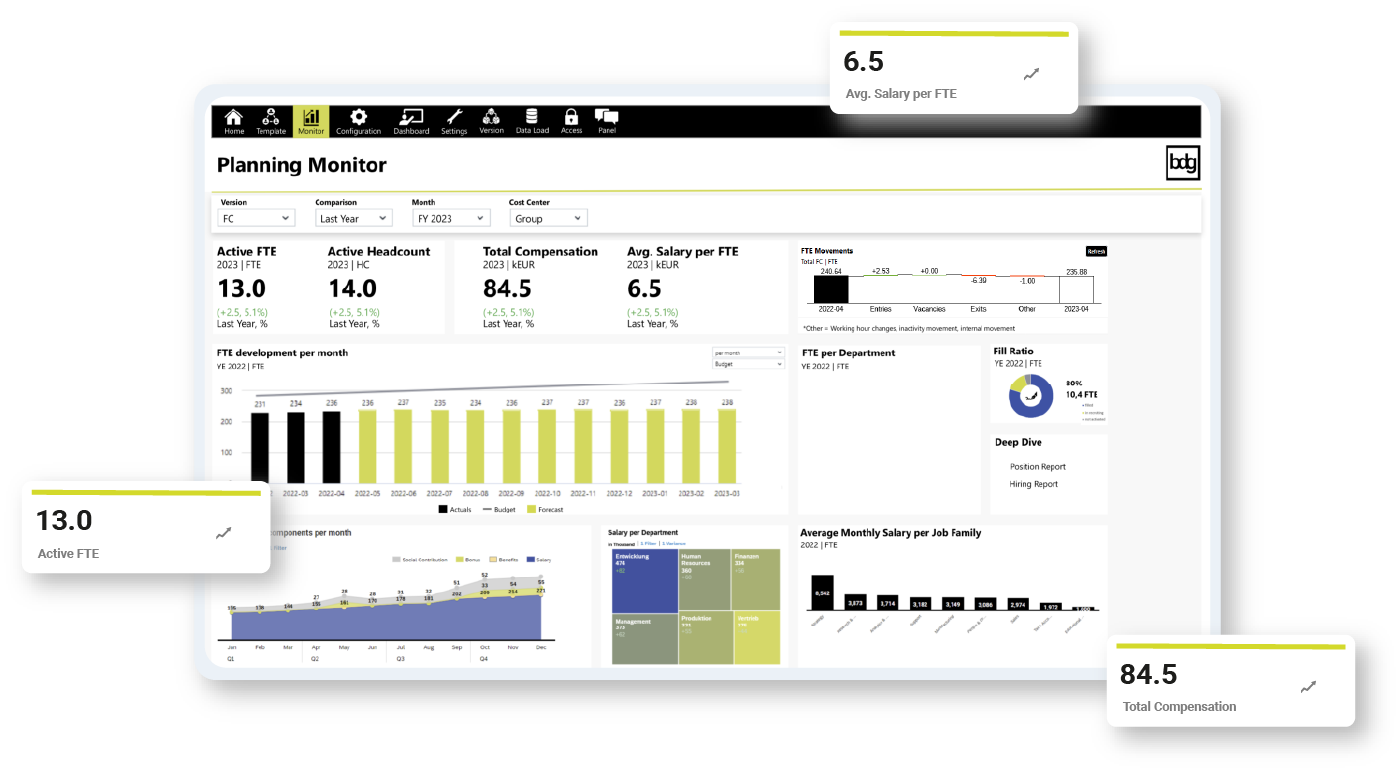
Understanding people: more than a gut feeling
Although HR has become increasingly organised and systematised in recent years, working with recognised psychological methods and making decisions based on statistically supported criteria, HR still has a reputation as a nefarious "gut feeling discipline" - let's change that! With bdg ONE, the data that HR departments have been entering cleanly into databases for years is finally being fully utilised. For planning, reporting and also for comprehensive analyses.
The video gives you a foretaste.
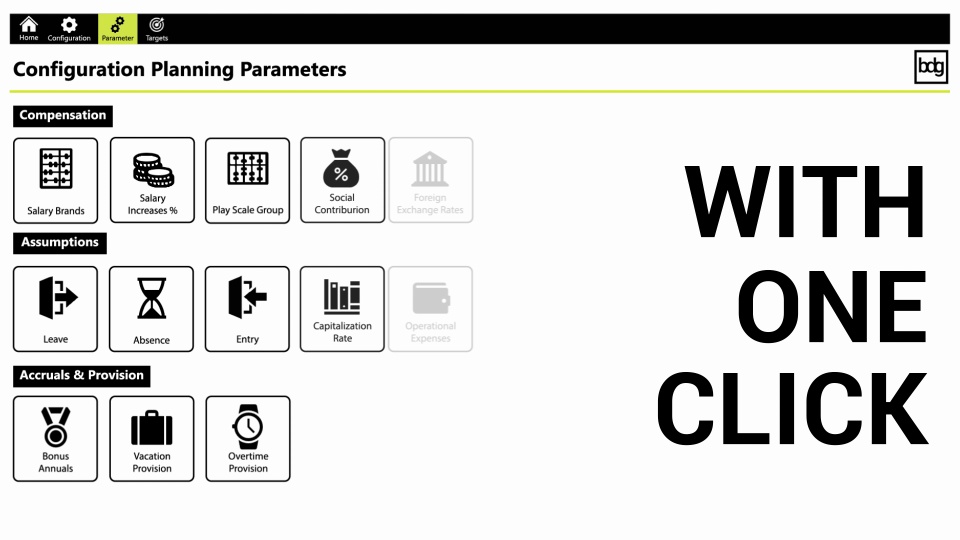
Analyses: Methods in bdg ONE
BASIC: Age structure analysis, diversity analysis, satisfaction evaluation, various FTE analyses, analyses of salary bands - classic HR analytics that should not be missing from any report.
ADVANCED: Personnel cost centre analysis, personnel requirements analysis - find out in advance which personnel requirements result from your growth targets and which personnel cost centres result from them.
PRO: Personnel movement analysis - gain insights into the background of entries and exits, how and why deviations from your HR planning came about and what levers you could use to improve the situation.
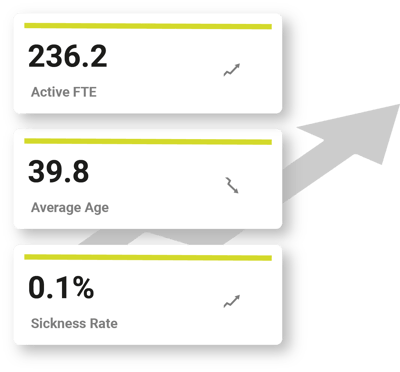
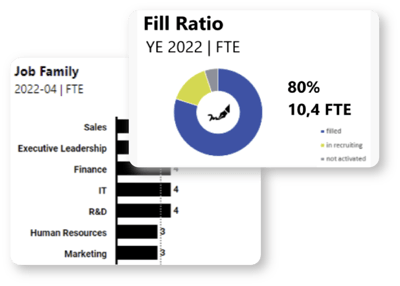
Integrate data, enable analyses
In-depth analyses - in HR, as in all other specialist areas - are only possible if a considerable amount of data is already available. Fortunately! Most companies already collect a huge amount of HR data, but of course do not get around to analysing it. On the one hand, because the time required is gigantic, on the other hand because the data is collected decentrally. Master data are in the finance department, employee evaluations in the HRMS - bdg ONE brings all this data together and thus enables a multitude of analyses. Especially those from the area of people analytics.
Automatic consolidation in the report
Create a comprehensive business report from your analytics. All data is aggregated in real time and prepared as a business report. But you can also go deep into the details at any time. Reporting, simply at the touch of a button.
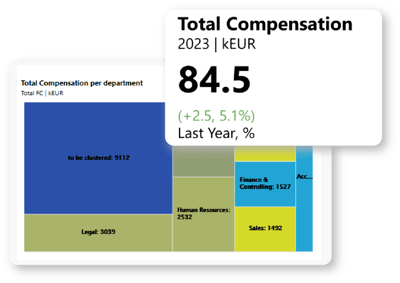
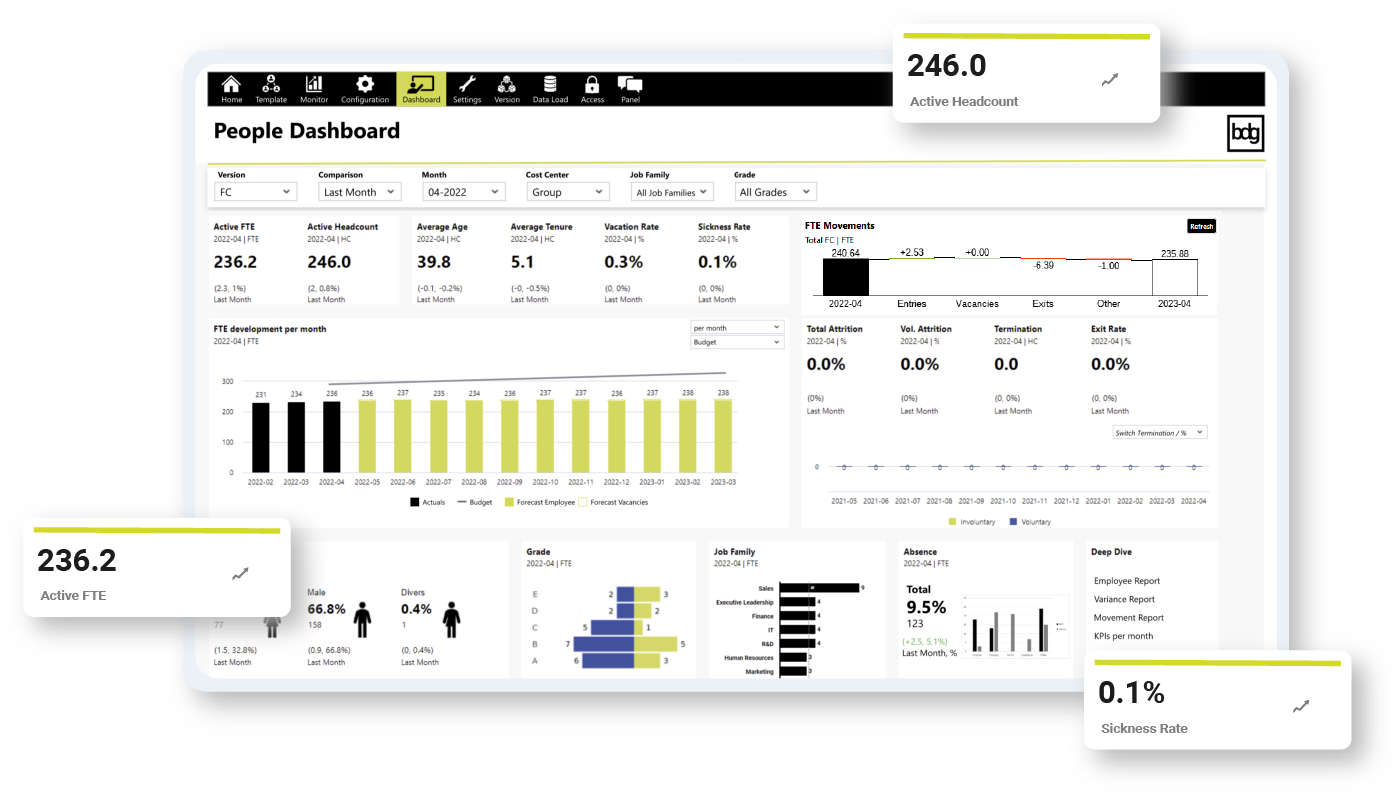
Analyse personnel movements
Among the typical HR KPIs, the turnover rate is particularly important. It is the end of the line, the hard fact, the OKR for successful HR work.
But it is not so easy to determine how changes in employee turnover come about in order to make statements that can be planned. bdg ONE now offers personnel movement analyses that derive exactly that from the data.
HR-planning | FAQ's
What is hr-planning anyways?
In short, human resource planning includes all processes that have the goal of calculating, achieving and then maintaining the ideal human resource situation. This is achieved through the holistic management of all human resources along the value chain.
For this purpose, personnel planners try to understand the entire employee lifecycle in order to anticipate needs and also deficiencies and to cover the personnel requirements that result from the strategic growth targets. In HR, too, planning processes create a corridor within which operational implementation takes place. The better the planning, the more successful the implementation.
Which types of hr-planning are there?
- Staff deployment planning: Shift schedules, task distribution and project assignments are part of staff deployment planning.
Staff redundancy planning: Takes place within the framework of staff requirement planning and, in addition to staff reductions, also includes outplacement offers as well as the planning of severance budgets - here a link with the finance area is particularly useful.
Personnel development: Further and advanced training, potential analyses, retraining, candidate selection, the assessment of employees and the entire onboarding process fall within the scope of personnel development.
Personnel requirements planning: The supreme discipline! Personnel requirements planning calculates from all available data how many employees with which skills are needed in which positions - now and in the future.
Recruitment planning: You have determined in personnel requirements planning that you need more people - so you start recruiting. All related processes fall under recruitment planning. With defined key figures, for example Time-To-Hire and Time-To-Fill, recruitment performance can also be measured and optimised accordingly.
Personnel cost planning: Salaries, salary bands as well as all ancillary wage costs and fringe benefits fall under the heading of personnel cost planning. Integrated personnel planning, implemented by bdg, automatically generates the relevant cost centres parallel to general personnel planning.
What is integrated hr-planning??
You achieve integrated human resource planning by closely linking the planning processes in human resources with those of the finance department, which in turn are also linked to the organisational units that generate human resource needs - production centres, departments, etc. The advantage of integrated human resource planning is that it becomes possible to assess human resource needs on the basis of certain parameters, which are usually derived from strategic business planning as well as other factors.
In fact, integrated human resource planning is only possible with appropriate planning applications, such as the one we are promoting here. The added value of such tools comes from the shortening of planning cycles with a simultaneous increase in planning quality as well as management consolidation and the immediately noticeable reduction in coordination rounds between management and decentralised organisational units.
How are staffing needs calculated?
In fact, this question is very complex. Therefore, one has to look at it in a differentiated way: Acute personnel needs in a certain occupational group can be calculated very easily on the surface. You only have two horn players in your orchestra, but the piece you are rehearsing calls for eight? There you have your personnel requirement - six.
For companies, it actually works the same way, only scaled across all company divisions and stretched over the entire planning period and taking various factors into account.
You calculate the basic staffing needs from your available FTEs and the required FTEs for all occupational fields in all departments. Then you approximate fluctuation, retirements, absences due to illness, parental leave, order cancellations, etc. using your personnel data or analytics to calculate the additional demand. In many sectors, there are also seasonal extra requirements. And to be on the safe side, critical skills should generally be available redundantly, preferably distributed in different areas of operation. This way, you can counteract vacancies when they occur.
You already need a powerful planning tool for personnel requirements planning; but it really gets down to the nitty-gritty when it comes to strategic personnel requirements planning.
What is strategic workforce planning?
Strategic workforce planning goes one step further, taking the whole data set and calculating a multiplier based on your growth rate and strategic goals. Many companies use special parameter matrices for scenario simulation.
The aim is to calculate at the strategic level, i.e. usually years in advance, when and where which skillsets are needed and in what numbers, in order to be able to set the course accordingly at an early stage.
We use tool XYZ, can you connect that?
In principle, we can connect any pre-system. It is easy if your tool provides a free API for developers, which most do ... and we have already linked most of them before. Challenges can arise more with in-house developments, but even for that we have a large repertoire of solutions and an experienced team that finds a way.
What exactly is xP&A?
xP&A stands for "Extended Planning and Analytics" and essentially describes the idea of transferring planning and analysis processes established in the finance department (FP&A, Financial Planning and Analytics) to other departments in the company. Be it budgets, personnel costs, expenses or other data - every department in every company is connected to the finance department in one way or another. This connection is strengthened in the xP&A approach. It's about data aggregation, management consolidation and increased efficiency at all levels.
We would be happy to present this integration of the different areas to you in the context of our "Collaborative and Connected Decision Making Platform" in a demo, which you can book here on this page, among other places.
We keep at it! Stay in Touch!
Register for the HR Newsletter and we shall inform you whenever we make significant advances in the field of HR.